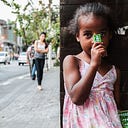Stroke is not the end
A brief history of a Stroke survivor
Thirteen years ago, Lucia Kopschitz Xavier Bastos, former professor at Unicamp (Campinas State University) has gone through a situation that changed her life. She was victim of an ischemic stroke that affected both her movements and speech. The accident happened in December 2001. After four months in hospital, some of them in an induced coma at the ICU, Lúcia returned home in late March 2002. This history takes place in Campinas (state of Sao Paulo), Brazil.
To date, Lúcia still has sequel of the accident – since she has no movement from the neck down, and she still cannot speak – but skirted the situation with willpower and support from family and friends. Through an alphabet divided into four lines (pictured), Lúcia manages to communicate with literally a snap — each correct letter we say, she blinks indicating that it is right. That’s how the sentences are mounted.
Part of Lúcia Bastos’s life has been accompanied by Erik Nardini (me), a photographer who about a year ago began to take notes on her daily routine. The images, however, were taken in 2014, when the photographer felt safe to move forward on the project, entitled “Stroke is not the end.”
Thought to be completed before the World Stroke Day, which is celebrated October 29, Erik and Lúcia’s project is an intimate rehearsal inside a routine of a stroke survivor. Despite the (huge) difficulties, Lúcia demonstrates strength and will to live, as indicated by the smiles in the pictures.
See the whole work at www.eriknardini.com/stroke
Find this history in Portuguese here
Requests: eriknardini@live.com

